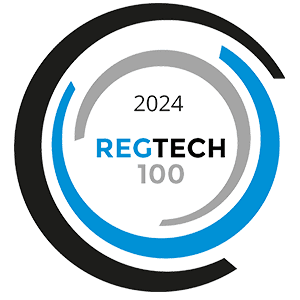Special Purpose Acquisition Companies (SPACs) have become increasingly popular as private companies see the potential opportunities they provide to bring private companies into public markets more quickly than possible under a traditional IPO (initial public offering). High-profile companies that have recently used SPACs to grow their firms and become publicly traded include Virgin Galactic, DraftKings, and electric truck producer Nikola.
However, the merger of a SPAC and its target company can create a host of risks, governance, and reporting challenges that must all be dealt with on an accelerated timeline.
How do SPACs Work?
SPACs raise capital in public markets with the sole intention of identifying and merging with a private operating company.
These mergers benefit the target company by providing capital it might otherwise have to raise through an IPO. After the merger, the SPAC and the target company shareholders own the combined public operating company.
While a target company may spend years preparing for a traditional IPO, a SPAC will allow a target company to quickly become public in an earlier stage of development.
What’s the Typical Timeframe for a SPAC Creation/Merger?
Generally, SPACs have 18-24 months to identify and merge with a target company. Otherwise, they may be forced to liquidate and return the proceeds to shareholders.
Once a target company is identified, the merger can occur in just a few months. During that time, the firms must complete robust financial reporting and filing requirements and submit them for review by the SEC.
The combined public company will need to have personnel and processes in place to ensure that their financial reporting is compliant with all SEC rules and regulations.
What Potential Compliance Issues Should Be On My Radar When Dealing with a SPAC?
Target companies often face complex issues as they account for and report SPAC mergers. Some of the top regulatory issues faced include:
- Determination of whether financial statements should be prepared in accordance with U.S. Generally Accepted Accounting Principles (GAAP) or alternatively may be prepared in accordance with International Financial Reporting Standards (e.g., if the combined public company will be eligible to report on forms applicable to foreign private issuers)
- Public company disclosure requirements, including issues related to the identification of the predecessor entity, the form, and content of financial statements, and the preparation of pro-forma financial information
- Identification of the entity in the merger that should be treated as the acquirer for accounting purposes, including variable interest entity considerations, and whether the transaction is a business combination or reverse recapitalization
- Accounting for earn-out or compensation arrangements and complex financial instruments
- Application of GAAP for public business entities (e.g., earnings per share, segment disclosures, and expanded disclosure requirements for certain topics such as fair value measurements and post-retirement benefit arrangements) and the related reversal of any previously-elected Private Company Council accounting alternatives available to private companies
- Determination of the effective dates of recent accounting standards (e.g., leases and the current expected credit losses), with certain public companies eligible to adopt those standards on a timeline that is generally more aligned with the effective dates applicable to private companies; the evaluation of, and preparation for, any potential acceleration of adoption of those standards if the company’s status changes; and the required disclosure of the impact those standards will have when adopted.
Target companies will need to quickly adapt to the regulations required of public companies, such as maintaining internal control over financial reporting (ICFR) and disclosure controls and procedures (DCP).
In addition, management needs to conduct an annual evaluation of ICFR and DCP and determine when an ICFR is required, whether an auditor’s report is needed, exclusions that may apply, and what disclosure they must have. Target companies must understand and implement procedures to address these requirements in a timely manner.
What Types of Audit/Compliance Support Should The Target Company Use To Ensure They’re Prepared for SEC Audits?
An independent auditor should audit the target company’s annual financial statements in accordance with the Public Company Accounting Oversight Board (PCAOB) standards by a public accounting firm registered with the PCAOB and compliant with both PCAOB and SEC independence requirements.
The target company must also take special care to ensure that the auditor is independent (will not be auditing their own work or be in a management position). The Office of the Chief Accountant (OCA) is available to clarify any issues regarding merging target companies with SPACs.
While a traditional IPO may still be a better option for some companies, SPACs can reduce uncertainty and empower companies to close deals more quickly. After you determine which mechanism is the right fit for your company’s strategic goals, consult with a compliance professional to ensure you have the right compliance processes in place for filing necessary documents and meeting deadlines.





